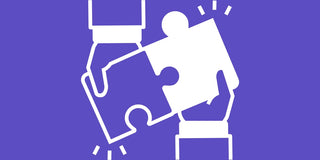I. Introduction: The Sky's Architects – A Glimpse into the Pilot Profession
Pilots are central to India's booming aviation industry, holding immense responsibility for the safe and efficient operation of aircraft. Their role goes beyond just flying; it involves meticulous planning, constant monitoring, and critical decision-making, often under significant pressure. This profession demands a unique blend of technical skill, unwavering discipline, and sharp situational awareness. India's aviation sector is currently experiencing unprecedented growth, leading to a huge demand for skilled aviators. However, this rapid expansion also brings challenges, including concerns about pilot well-being, the high cost of training, and an evolving regulatory environment. This report explores the multifaceted world of the pilot in India, covering their daily duties, the rigorous path to qualification, and the significant challenges and opportunities that define this vital profession.
II. The Pilot's Command: Daily Responsibilities and Operational Dynamics
A commercial pilot's day is a structured yet dynamic mix of duties, from exhaustive pre-flight preparations to meticulous post-flight procedures, all aimed at ensuring the highest safety standards.
A. Pre-Flight Duties: The Foundation of Safety
Before every flight, pilots undertake a series of critical preparations:
- Weather Review: They meticulously check weather reports and adjust flight plans to ensure a safe trajectory.
- Aircraft Inspection: Pilots collaborate with ground engineers to conduct thorough technical inspections, verifying the aircraft's airworthiness.
- Air Traffic Control (ATC) Coordination: They coordinate with ATC for clearances and route confirmation, crucial for safe integration into complex airspace.
- Crew Briefing: An essential briefing is held with the entire crew to discuss emergency procedures and flight details, ensuring everyone is prepared.
- Document Verification: All necessary documents, including licenses, logbooks, and aircraft registration, are checked for currency.
- Physical Walk-around: A detailed external inspection is performed to identify any damage, loose panels, or leaks.
- Fuel and Oil Checks: Levels are meticulously checked for sufficiency and contamination.
- Flight Controls Test: All flight controls and surfaces are moved to confirm smooth operation.
- Tire and Brake Inspection: These are checked for wear or leaks.
- Lights Test: All navigation, landing, and beacon lights are tested for functionality.
- Weight and Balance Calculations: These are performed to ensure the aircraft is not overloaded, a fundamental safety requirement.
This extensive preparation highlights a proactive approach to risk mitigation, positioning the pilot as the primary safety gatekeeper.
B. In-Flight Operations: Vigilance and Control
Once airborne, pilots maintain continuous vigilance:
- Instrument Monitoring: They constantly monitor flight instruments like altitude, speed, fuel levels, and engine gauges for optimal performance.
- ATC Communication: Ongoing communication with ATC involves requesting route adjustments and receiving critical updates on airspace and weather.
- Real-time Adjustments: Pilots manage changes like turbulence and flight deviations to maintain safety and efficiency.
- Standardised Communication: They use standardised phraseology, read-backs, brevity, and the phonetic alphabet to prevent misinterpretations.
- Information Provision: Essential information like aircraft identification, position, and estimated times is provided for ATC clearances.
- Co-pilot's Role: The co-pilot (First Officer) shares responsibilities, monitoring instruments, handling communications, and assisting with navigation and critical decisions. While the Captain has ultimate authority, the co-pilot's support is vital for shared situational awareness.
This continuous monitoring and precise communication reflect the "Aviate, Navigate, Communicate" principle, prioritising aircraft control, navigation, and then external coordination.
C. Post-Flight Procedures: Ensuring Continuity and Accountability
Upon landing, pilots complete final duties for operational continuity and accountability:
- Flight Reports: Detailed flight reports are filed, documenting technical performance and any irregularities.
- Aircraft Checks: Comprehensive checks are performed before handing the aircraft to maintenance.
- Airline Coordination: Pilots coordinate with airline operations for future assignments or rest periods.
- Post-flight Debriefing: Formal or informal debriefings are crucial for learning from each flight, reviewing performance, identifying errors, and improving future flights.
These meticulous procedures highlight a critical feedback loop, ensuring continuous improvement in aviation safety.
D. Operational Variations: Domestic vs. International, Short-haul vs. Long-haul
Pilot operations vary significantly:
- Domestic Pilots: Typically operate shorter flights with multiple daily segments, often returning to their home base.
- International Pilots: Handle long-haul routes (10-15+ hours) requiring extended layovers and overnight stays in different countries.
- Fatigue Management: Managing fatigue is paramount for international pilots due to extended hours and time zone changes, relying on controlled rest periods and strict crew rotation.
This distinction necessitates tailored fatigue management strategies, recognizing that pilot well-being is crucial for safety in a globally connected industry.
III. Charting the Course: The Path to Becoming a Commercial Pilot in India
Becoming a commercial pilot in India is a rigorous process governed by the Directorate General of Civil Aviation (DGCA).
A. Educational and Medical Prerequisites
The journey begins with specific educational and medical criteria:
- Education: Candidates must complete 10+2 (higher secondary) with Physics and Mathematics as compulsory subjects. A bachelor's degree, though not mandatory, is often preferred by airlines.
- Medical Certificate: A mandatory Class 1 Medical Certificate requires a comprehensive physical and mental examination to meet stringent aviation health standards. A Class 2 Medical is usually the initial step.
- English Proficiency: Pilots must demonstrate fluent English, often requiring an ICAO Level 4 endorsement, especially for international routes.
This dual emphasis on academic foundation and medical fitness ensures pilots can handle the demanding cognitive and physiological aspects of flight.
B. Training Programs and Licensing (CPL & ATPL)
Aspiring pilots must enrol in a DGCA-approved flight school for ground and flight training.
- Ground School: Covers theoretical knowledge in air regulations, meteorology, navigation, and aircraft systems.
- Flight Training: Involves practical flying experience under certified instructors, accumulating specified flight hours including solo, cross-country, instrument, and night operations.
Commercial Pilot License (CPL):
This is the initial professional license, allowing pilots to be paid for flying duties, typically as a co-pilot.
-
Minimum Flight Hours: 200 hours, including:
- 100 hours as Pilot-in-Command (PIC).
- 50 hours of solo cross-country flying.
- 40 hours of instrument flight (up to 20 hours on a simulator).
- 15 hours of multi-engine time.
- 10 takeoffs and landings by night.
- Theory Exams: Candidates must pass DGCA exams in Air Navigation, Air Meteorology, and Air Regulations.
Airline Transport Pilot License (ATPL):
This is the highest certification required to become a Captain in commercial airlines.
-
Minimum Flight Hours: 1,500 total hours, including:
- 500 hours as PIC.
- 250 hours of cross-country flying.
- 100 hours of night flying (including PIC and cross-country).
- 75 hours of instrument time (including simulator training).
- 10 hours of multi-engine aircraft experience.
- Theory Exams: Candidates must pass advanced DGCA ATPL exams in Air Navigation, Air Regulations, Meteorology, and Radio Aids and Instruments, with a minimum 70% score in each.
- Skill Test: Includes a simulator checkride and an assessment flight by DGCA-approved examiners.
This structured progression, with increasing flight hours and specialised experience for ATPL, emphasises that accumulated practical experience is paramount for career advancement and leadership.
C. Cadet Pilot Programs: A Structured Pathway
To address pilot demand, major Indian airlines like IndiGo, Air India, and SpiceJet partner with flight schools for cadet pilot programs.
- Airline-Endorsed Training: These programs offer standardised training aligned with airline expectations and operational procedures.
- Conditional Job Offer: They often include a conditional job offer upon successful completion, providing a faster entry into airline careers.
- Mentorship: Cadets receive mentorship and early exposure to the airline environment.
These programs are a strategic response to the pilot shortage, aiming to produce "airline-ready" candidates.
Financial Investment:
Becoming a pilot in India involves substantial costs:
- Independent CPL Training: Estimated ₹35-50 lakhs.
- Cadet Programs: Can range from ₹70 lakh to ₹1 crore, often covering flight training, ground school, type rating, and licensing fees, sometimes with loan or bond arrangements.
- Accommodation & Living Expenses: These are additional, significant costs.
This financial burden can be a major barrier, often leading to debt.
IV. Navigating Turbulence: Challenges and Realities of a Pilot's Life
The pilot profession in India, while rewarding, presents significant challenges impacting well-being and operational effectiveness.
A. Pilot Fatigue: A Pervasive Safety Concern
Pilot fatigue is a critical and widespread safety issue:
- Causes: Demanding long duty hours, irregular schedules, and night flying contribute to chronic fatigue.
- Survey Findings: 70% of pilots feel duty periods over 10 hours significantly contribute to fatigue; 63% cite roster instability and frequent schedule changes.
- Consequences: Fatigue impairs judgment, delays decision-making, and decreases alertness, posing serious safety risks.
- Dozing Off: A 2022 survey revealed 66% of pilots admitted to dozing off during shifts or flights due to exhaustion.
- Reluctance to Report: Many pilots hesitate to report fatigue or seek mental health support due to fear of losing medical certification and associated stigma.
This systemic issue highlights a tension between operational efficiency and pilot well-being, where economic pressures can inadvertently compromise safety.
B. Stress and Decision-Making Under Pressure
Pilots operate in a high-stress environment:
- Stressors: Managing intricate flight operations, responding to emergencies, and making split-second decisions for hundreds of lives are constant stressors.
- Impact on Decision-Making: Research shows stress negatively correlates with decision-making ability and cognitive flexibility.
- Accident Statistics: A higher number of accidents occur during stressful and pressured situations.
- Mitigation: Cultivating cognitive flexibility and integrating stress management interventions are crucial for improving decision-making under pressure.
- Mnemonics: Tools like "Aviate, Navigate, Communicate" help pilots prioritise actions during critical events.
The emphasis on psychological resilience and stress inoculation in training is vital, as human factors are often the root cause of aviation incidents.
C. Financial Burden and Career Progression
The substantial financial investment is a major hurdle:
- High Training Costs: Independent CPL training costs ₹35-50 lakhs, while cadet programs can reach ₹70 lakh – ₹1 crore. This often traps pilots in debt.
- Pay Disparity: A noticeable pay disparity exists between local and foreign pilots despite comparable qualifications.
- Unemployment Paradox: Many newly licensed CPL holders remain unemployed due to a lack of specific type ratings, insufficient simulator experience, or underdeveloped Crew Resource Management (CRM) skills required by airlines.
This economic vulnerability and training-to-employment mismatch indicate systemic inefficiencies in the pilot supply chain.
D. Work-Life Balance and Roster Instability
Pilots and cabin crew frequently face unpredictable working hours:
- Unpredictable Schedules: Frequent roster changes, sometimes with as little as 12 hours' notice and often without standby compensation, significantly erode personal life.
- Circadian Rhythm Disruption: This instability disrupts natural circadian rhythms, affecting physical and mental well-being.
- Denied Leave: Leave entitlements are often denied under "operational needs," forcing pilots to work when entitled to rest.
This constant disruption leads to fatigue and anxiety, potentially contributing to attrition despite high demand.
V. Horizon Ahead: Emerging Trends and the Future of Aviation in India
The pilot profession in India is at a fascinating juncture, shaped by surging demand, technological advancements, evolving policies, sustainability, and shifting demographics.
A. Surging Demand and Supply Dynamics
India's aviation sector is experiencing an unprecedented boom:
- Massive Aircraft Orders: Indian airlines have ordered over 1,200 commercial aircraft, signalling an urgent need for new pilots.
- Projected Pilot Requirement: India will need 35,000-40,000 new pilots over the next decade, with over 7,000 needed between 2024 and 2026 alone. Annual demand is 1,500-2,100 pilots.
- Supply Shortfall: India issues only 1,200-1,500 new CPL licenses annually, leading to an annual shortfall of 500-700 pilots.
- Quality vs. Quantity: The primary issue is a deficit in "quality" – many CPL holders lack specific type ratings, simulator experience, or strong CRM skills, making them "unemployable" by airlines.
- Airline Focus: Airlines prioritise "airline-ready" pilots with type ratings, strong CRM/SOP discipline, high English proficiency, and valid Class 1 Medicals.
- Experienced Commander Shortage: There's a critical shortage of experienced Commanders, leading airlines to offer accelerated upgrade paths and higher pay.
This paradox highlights a "last mile" problem in India's pilot training, where basic licenses are issued, but specialised, expensive post-CPL training is often missing.
B. Technological Advancements and Automation
Automation is increasingly integrated into aviation:
- Enhanced Efficiency: Automation enhances efficiency and optimises flight management by handling routine tasks, allowing pilots to focus on higher-level decision-making.
- Safety Improvements: It ensures constant availability of critical flight data and improves flight safety by allowing pilots to focus more on environmental awareness.
- Cost Reduction: Automation can potentially reduce operational costs by decreasing the number of required flight crew members.
- AI's Role: AI is poised to enhance safety through real-time data analysis, predictive maintenance, and adaptive training scenarios.
- Challenges: Over-reliance on automation can lead to complacency and degradation of manual flying skills, potentially impairing effective intervention during emergencies.
- Shift in Role: The pilot's role is transforming from a direct "operator" to an "onlooker" or "system manager."
This shift necessitates pilot training to emphasise cognitive skills like situational awareness and critical thinking, reinforcing the human element's irreplaceable role.
C. Policy and Regulatory Landscape (DGCA)
The DGCA regulates civil aviation in India, enforcing regulations, investigating accidents, and issuing licenses.
- Revised FDTL Norms: Significant revisions to Flight Duty Time Limitation (FDTL) norms are a direct response to pilot fatigue concerns and court intervention.
-
Key Changes (Phased Implementation from July 1, 2025):
- Reduced maximum duty hours (to 8 hours per day).
- Increased weekly rest periods (from 36 to 48 hours).
- Reduced night flying (night duty defined as 0000-0600 local time).
- Cap on night landings (two per duty period).
- Other Initiatives: The DGCA is also tightening controls on structures near airports for safety and promoting regional connectivity through schemes like UDAN.
The DGCA's shift towards stricter FDTL rules, driven by external pressures, signals a positive move towards prioritising pilot well-being and safety.
D. Sustainability Initiatives
Sustainable Aviation Fuel (SAF) is a key short-term solution for reducing emissions:
- Technical Capability: India has demonstrated technical capability, with SpiceJet operating the first SAF-powered flight in 2018.
- Challenges to Scaling: Significant barriers impede commercial scaling, including modest blending targets (1% by 2025, 5% by 2030), high cost (2.5 times conventional fuel), and a perceived lack of political will and infrastructure investment.
- CORSIA Burden: The Carbon Offsetting and Reduction Scheme for International Aviation (CORSIA), mandatory from 2027, will impose additional costs on airlines if SAF production doesn't increase.
Achieving net-zero targets requires substantial government intervention and a national priority shift to build the SAF ecosystem.
E. Evolving Demographics: Women in Aviation
- India is a notable leader in promoting gender diversity in aviation:
- High Representation: Women pilots constitute approximately 15% of India's total pilot workforce (1,767 out of 11,775), significantly higher than the international average of 5-6%.
- Airline Representation: Major Indian airlines show substantial female pilot representation, with Alliance Air having the highest proportion (17.36%).
- Challenges: Female pilots still face misconceptions, cultural biases, and difficulties balancing demanding careers with family responsibilities.
-
Initiatives:
- Government programs like "Women in Aviation" offer mentoring, training, and scholarships.
- Financial incentives (e.g., lower landing fees) are provided to airlines with more female pilots.
- Private organisations (Aerospace Women’s League, Indian Women Pilots Association) offer mentorship and networking.
- Educational institutions have introduced women-only programs.
- Airlines offer maternity leave, flexible work hours, and female-friendly environments.
India's progress in gender diversity is commendable, but continued efforts are needed for full inclusion and career progression.
VI. Conclusion: Soaring Towards Tomorrow – The Enduring Appeal of the Pilot Profession
The pilot profession in India is at a fascinating crossroads, marked by unprecedented growth in demand driven by fleet expansions and a surging appetite for air travel. This demand, however, is met with a complex supply challenge, particularly a persistent shortage of "airline-ready" pilots who possess not only the necessary licenses but also specific type ratings and essential soft skills like Crew Resource Management. While the career offers substantial financial rewards, especially for experienced captains, it demands significant personal sacrifice, including a considerable financial investment in training and the navigation of persistent issues such as fatigue and work-life imbalance.
The industry is undergoing profound transformations, with increasing automation reshaping pilot roles from direct operators to sophisticated system managers, underscoring the growing importance of cognitive skills and vigilance in highly automated environments. Regulatory bodies, exemplified by the DGCA, are slowly but surely evolving, pressured by pilot advocacy and safety concerns, to implement more stringent welfare-focused policies designed to enhance pilot well-being. Furthermore, India is distinguishing itself as a global leader in female pilot representation, though underlying biases and the challenges of integrating demanding careers with personal responsibilities continue to require attention.
Despite the inherent turbulence of demanding schedules, high training costs, and the constant need for vigilance, the pilot profession in India retains an enduring appeal. It is a career of immense responsibility, continuous learning, and significant contribution to a rapidly expanding sector crucial for national connectivity and economic growth. The future trajectory of this profession will hinge on the industry's collective ability to holistically address the human element – ensuring pilot well-being through robust fatigue management, refining training programs to meet evolving technological and skill demands, and fostering a truly inclusive environment – to sustain its impressive and vital role in the nation's progress.
Source Links
- https://www.bls.gov/ooh/healthcare/dentists.htm
- https://dentalgroupoflubbock.com/the-daily-responsibilities-of-a-dentist-you-need-to-know/
- https://www.pilotcareer.in/airline-pilot/copilot-in-india-1-ultimate-guide/
- https://www.pilotcareer.in/aviation-pilot-things-to-know/pilot-demand-in-india/
- https://goldenepaulettes.com/how-many-pilots-are-needed-in-india-in-2025
- https://theprint.in/opinion/indian-pilots-are-tired-anxious-and-underpaid/2464310/
- https://m.thewire.in/article/government/the-dgca-has-played-fast-and-loose-with-pilots-wellbeing
- https://www.pilotcareer.in/aviation-pilot-things-to-know/airline-pilot/
- https://www.insightflyer.com/pre-flight-to-landing-the-1-aviation-safety-checklist/
- https://aim-india.aai.aero/eaip-v2-07-2023/eAIP/IN-ENR%201.1-en-GB.html
- https://14daypilot.com/aviator-blog/read/pilot-communication-tips
- https://avweb.com/features/post-flight-debrief/
- https://goldenepaulettes.com/pilot-fatigue-management
- https://www.flywithgati.com/Blog/blog_detail/What-it-takes-to-be-a-commercial-pilot-in-India
- https://goldenepaulettes.com/commercial-pilot-requirements-dgca
- https://www.aerogo.live/post/how-to-get-a-dgca-certificate
- https://www.pilotcareer.in/dgca-pilot-knowledge/commercial-pilot-india-dgca/
- https://epicflightacademy.com/indian-pilot-program/
- https://www.pilotcareer.in/airline-pilot/how-to-get-an-atpl-in-india/
- https://www.pilotcareer.in/aviation-pilot-things-to-know/pilot-license-conversion/
- https://www.avelflightschool.com/dgca-license/
- https://www.insightflyer.com/dgca-atpl-requirements-2025-your-complete-guide-to-becoming-an-airline-pilot/
- https://en.wikipedia.org/wiki/Directorate_General_of_Civil_Aviation_(India
- https://www.pilotcareer.in/how-to-become-a-pilot/cadet-pilot-program-india/
- https://www.tata.com/careers/jobs/air-india-cadet-pilots
- https://www.pilotcareer.in/aviation-pilot-things-to-know/pilot-demand-in-india/
- https://goldenepaulettes.com/mental-health-stress-management-for-pilots
- https://www.etvbharat.com/en/!business/extended-duty-hours-consecutive-night-flights-causing-pilot-fatigue-dgca-to-enforce-stricter-rest-norms-in-phases-from-july-1-enn25022204103
- https://www.thewire.in/article/government/the-dgca-has-played-fast-and-loose-with-pilots-wellbeing
- https://pmc.ncbi.nlm.nih.gov/articles/PMC12017664/
- https://en.wikipedia.org/wiki/Pilot_decision_making
- https://flytechaviation.aero/indias-aviation-boom-30000-pilots-needed-in-the-next-two-decades/
- https://deepaktalwar.com/automation-in-aviation/
- https://www.youtube.com/watch?v=zozgPC5U248
- https://m.economictimes.com/opinion/et-commentary/we-cant-afford-to-be-casual-about-protocols-why-ai-171-must-be-a-turning-point-in-indias-aviation-journey/articleshow/121937510.cms
- https://m.economictimes.com/industry/transportation/airlines-/-aviation/air-india-crash-effects-houses-near-airport-will-be-demolished-if-check-civil-aviation-regulator-dgcas-new-draft-rules/articleshow/121944455.cms
- https://www.fortuneindia.com/business-news/indian-aviations-sustainability-crisis-who-will-pay-for-flying-green/122278
- https://aviationtoday.in/civilaviation/women-make-up-15-of-indian-pilots-the-increasing-number-of-female-aviators/
- https://www.deccanherald.com/india/15-of-pilots-in-india-are-women-govt-3298383































